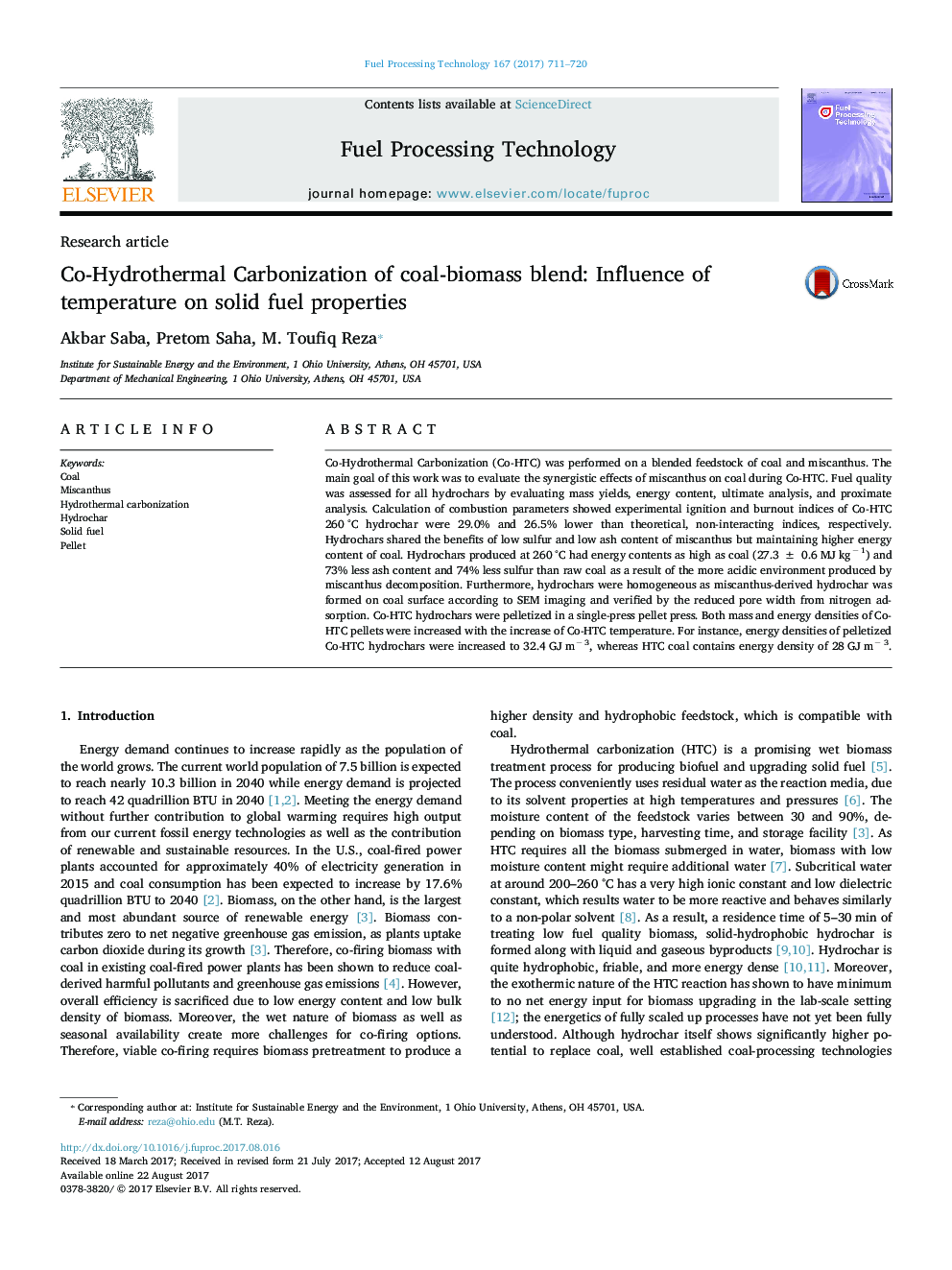| Article ID | Journal | Published Year | Pages | File Type |
|---|---|---|---|---|
| 6476387 | Fuel Processing Technology | 2017 | 10 Pages |
â¢Coal-biomass blend was hydrothermally carbonized at 200, 230, and 260 °C.â¢Co-HTC hydrochar contains ash as low as 3% ash content and as high as 27.3 MJ kgâ 1 energy.â¢Sulfur content of the Co-HTC hydrochar reduced to 1.2% - compared to the 4.6% of raw coal.â¢Energy density of the Co-HTC hydrochar pellets are increased to 32.4 GJ mâ 3.
Co-Hydrothermal Carbonization (Co-HTC) was performed on a blended feedstock of coal and miscanthus. The main goal of this work was to evaluate the synergistic effects of miscanthus on coal during Co-HTC. Fuel quality was assessed for all hydrochars by evaluating mass yields, energy content, ultimate analysis, and proximate analysis. Calculation of combustion parameters showed experimental ignition and burnout indices of Co-HTC 260 °C hydrochar were 29.0% and 26.5% lower than theoretical, non-interacting indices, respectively. Hydrochars shared the benefits of low sulfur and low ash content of miscanthus but maintaining higher energy content of coal. Hydrochars produced at 260 °C had energy contents as high as coal (27.3 ± 0.6 MJ kgâ 1) and 73% less ash content and 74% less sulfur than raw coal as a result of the more acidic environment produced by miscanthus decomposition. Furthermore, hydrochars were homogeneous as miscanthus-derived hydrochar was formed on coal surface according to SEM imaging and verified by the reduced pore width from nitrogen adsorption. Co-HTC hydrochars were pelletized in a single-press pellet press. Both mass and energy densities of Co-HTC pellets were increased with the increase of Co-HTC temperature. For instance, energy densities of pelletized Co-HTC hydrochars were increased to 32.4 GJ mâ 3, whereas HTC coal contains energy density of 28 GJ mâ 3.
